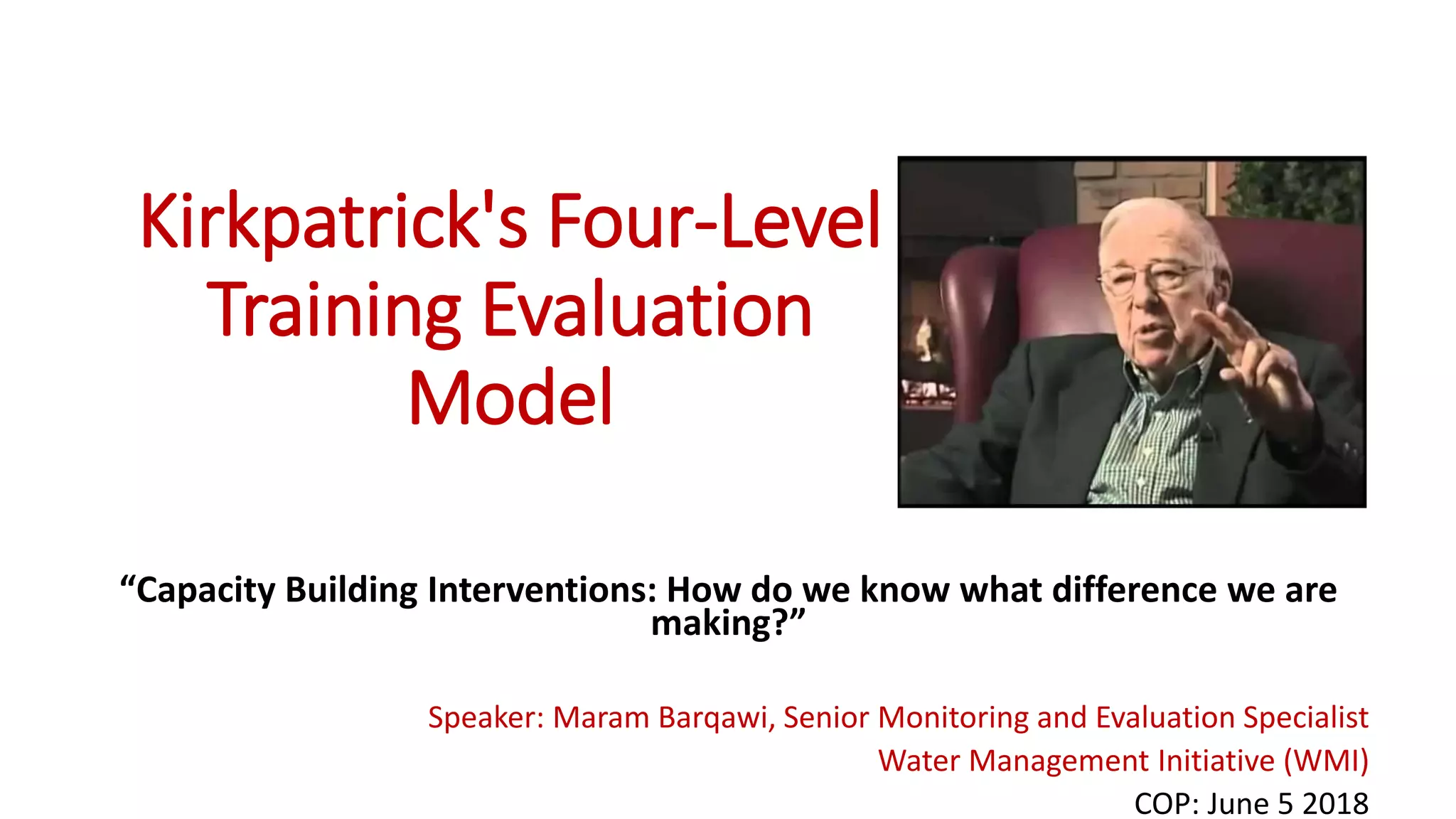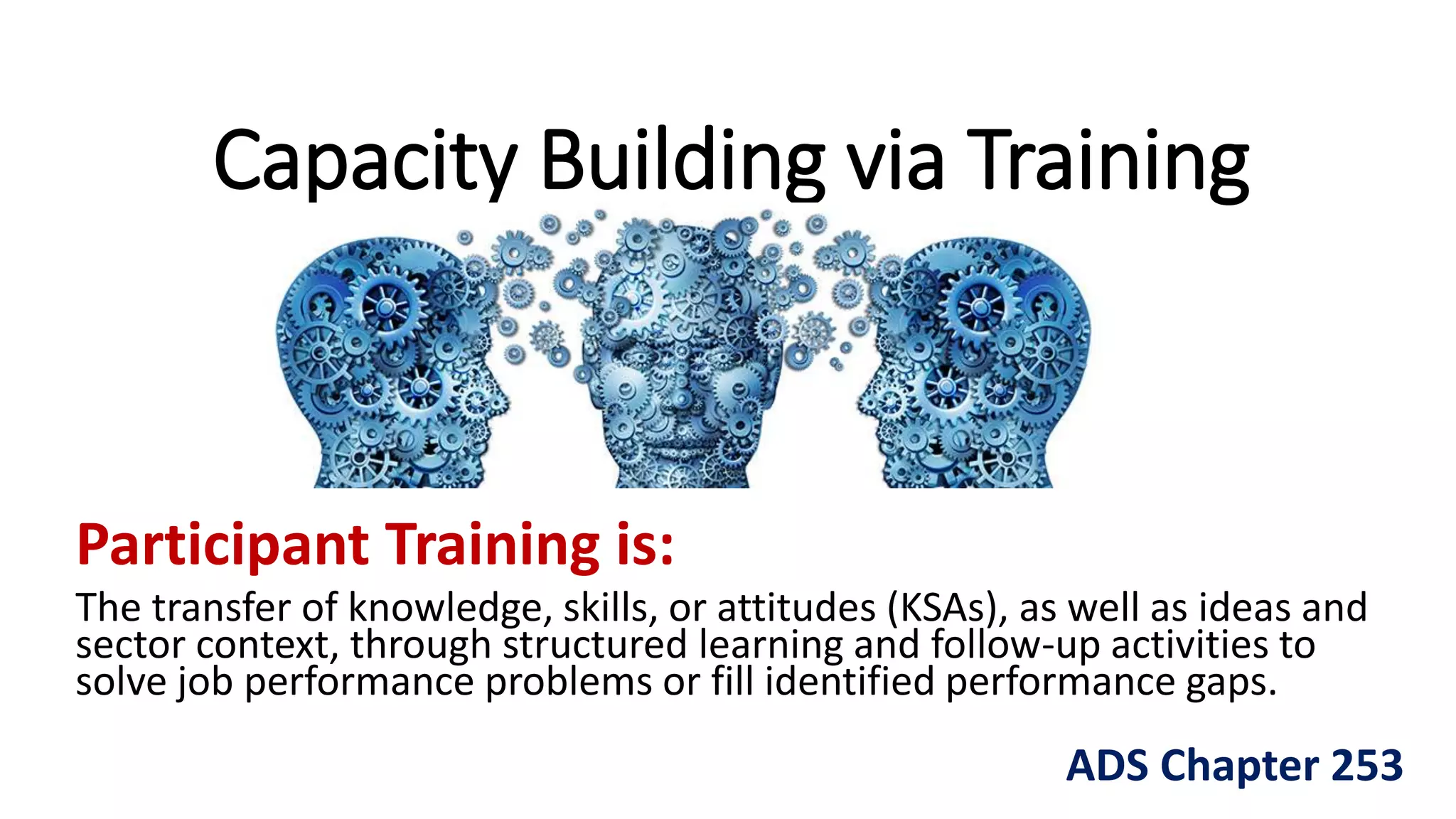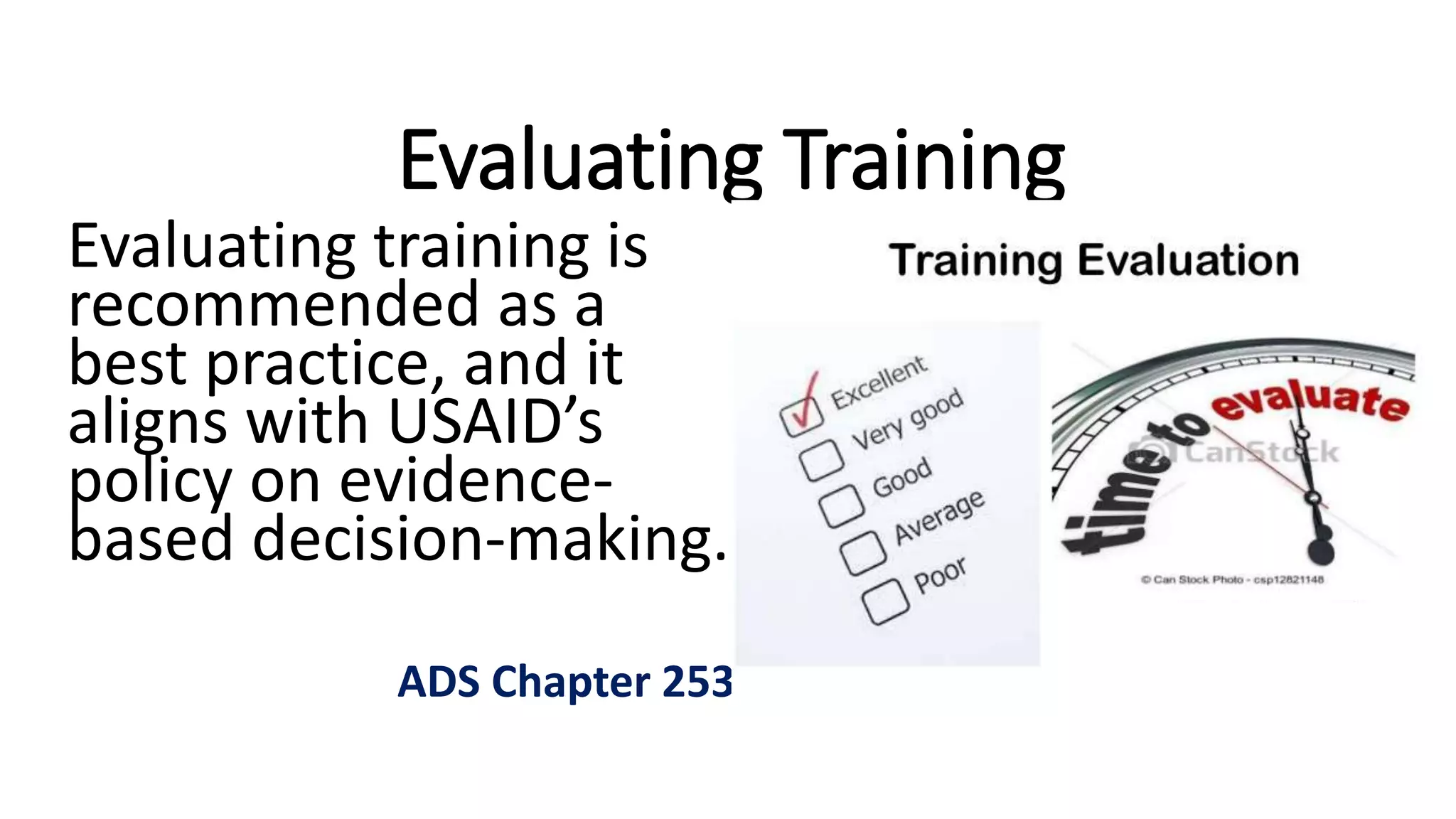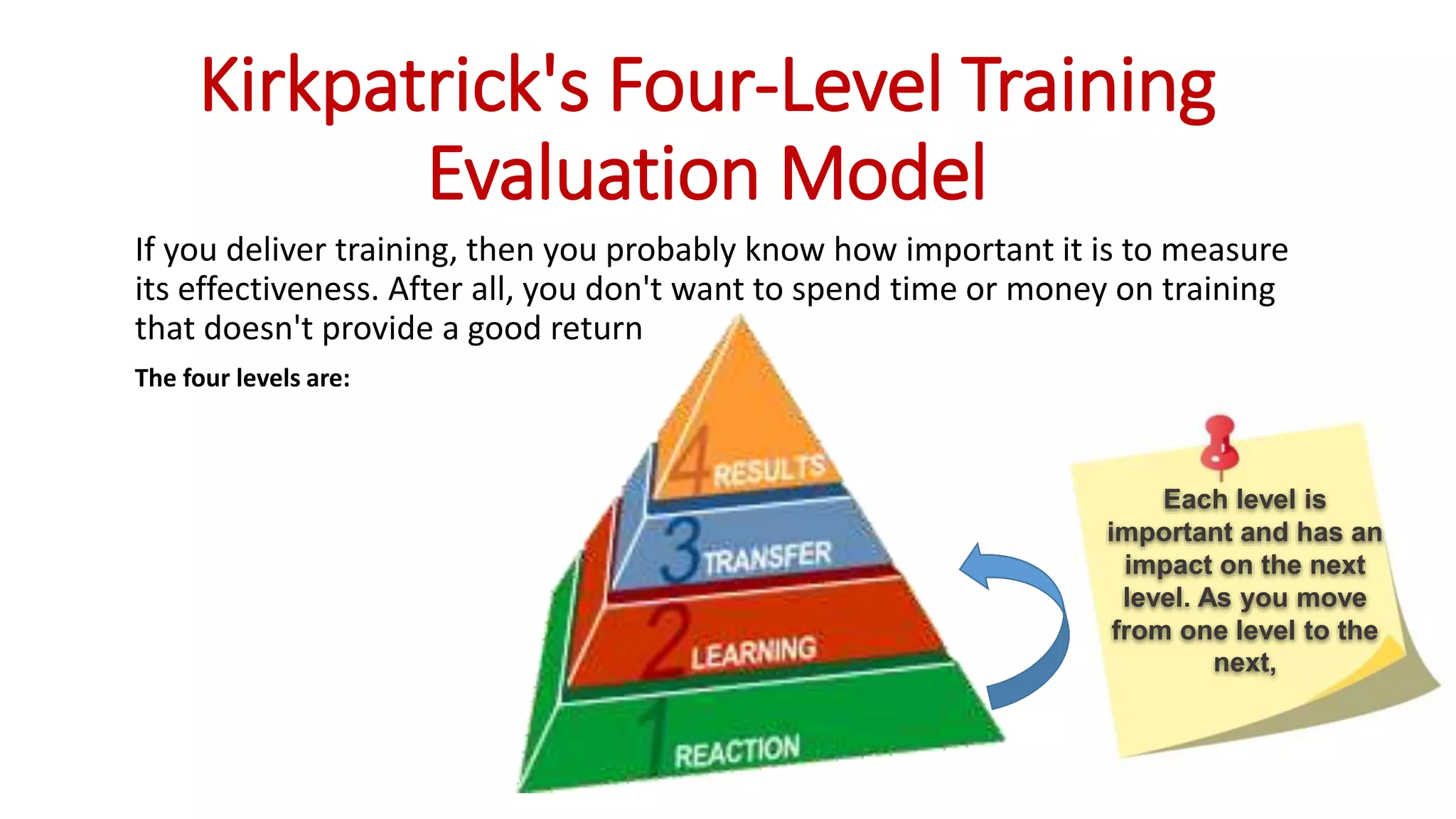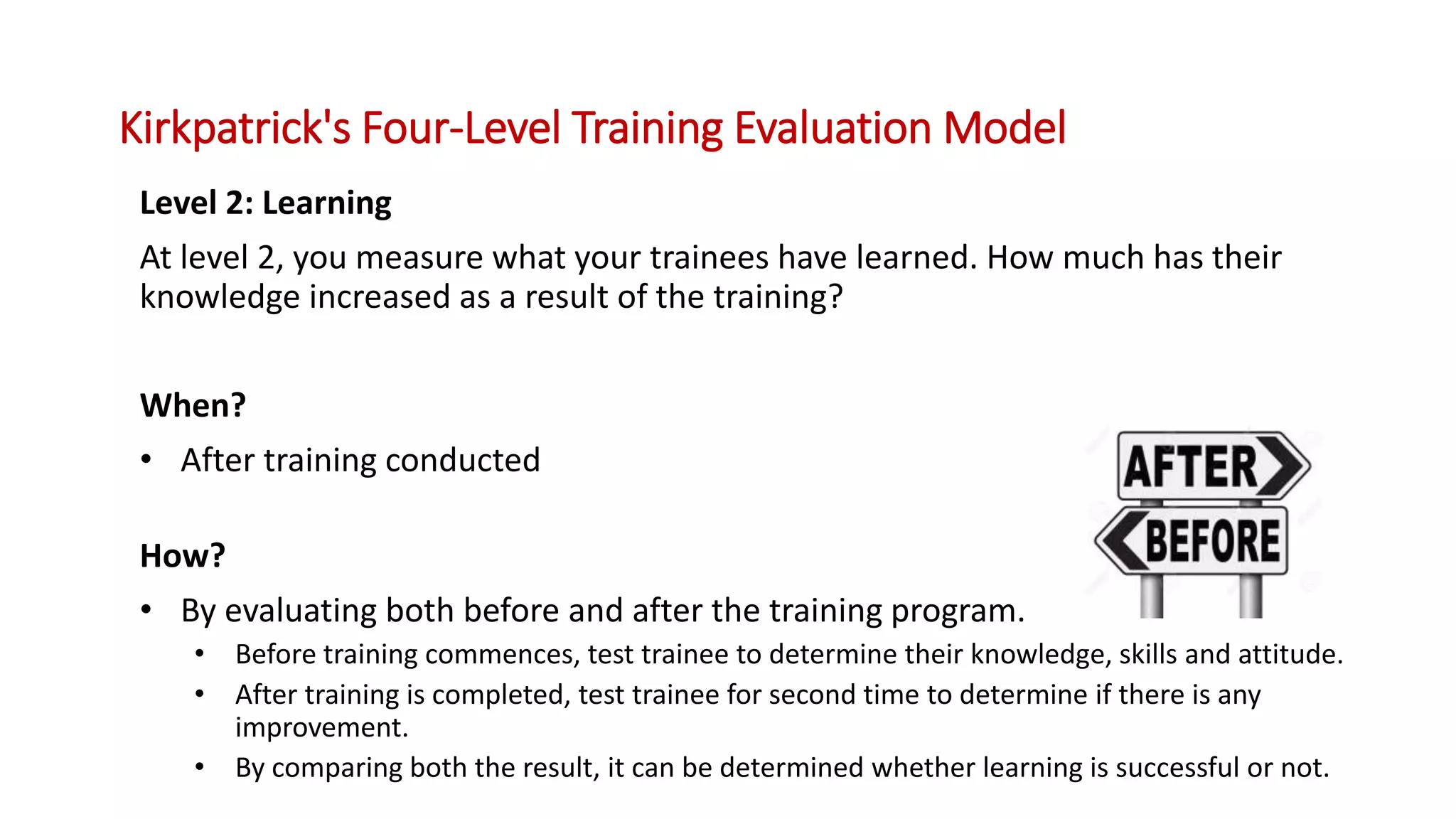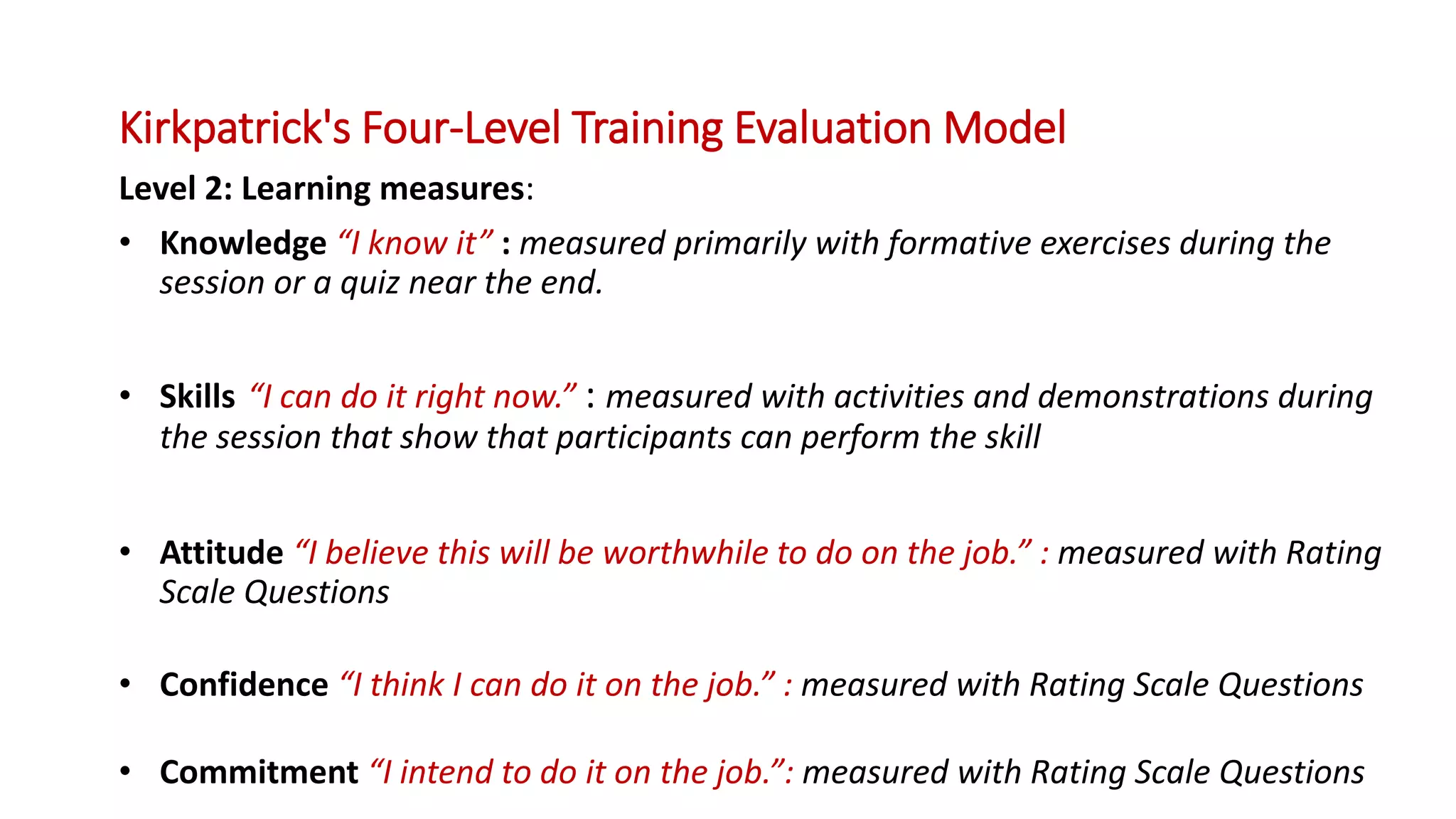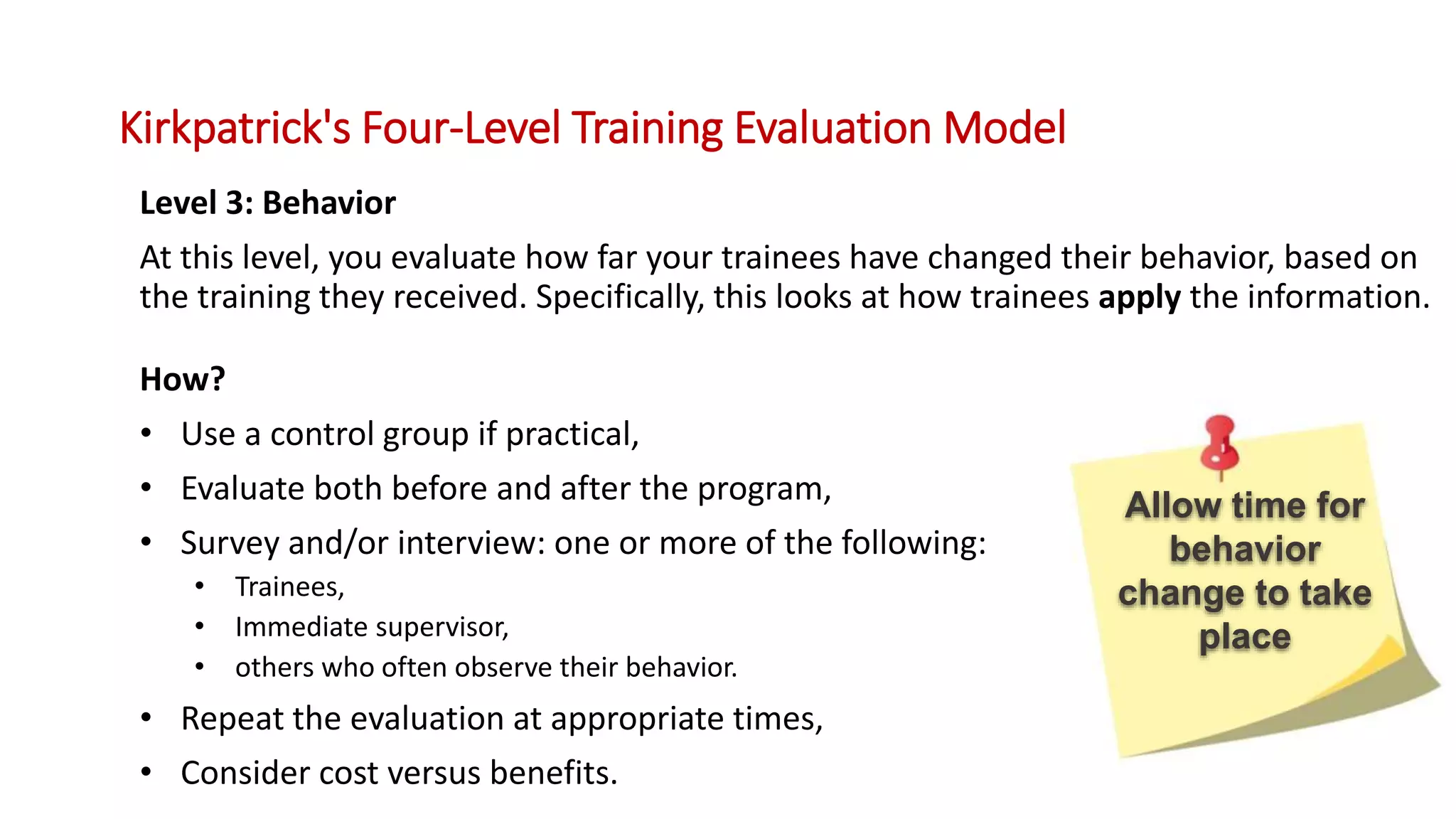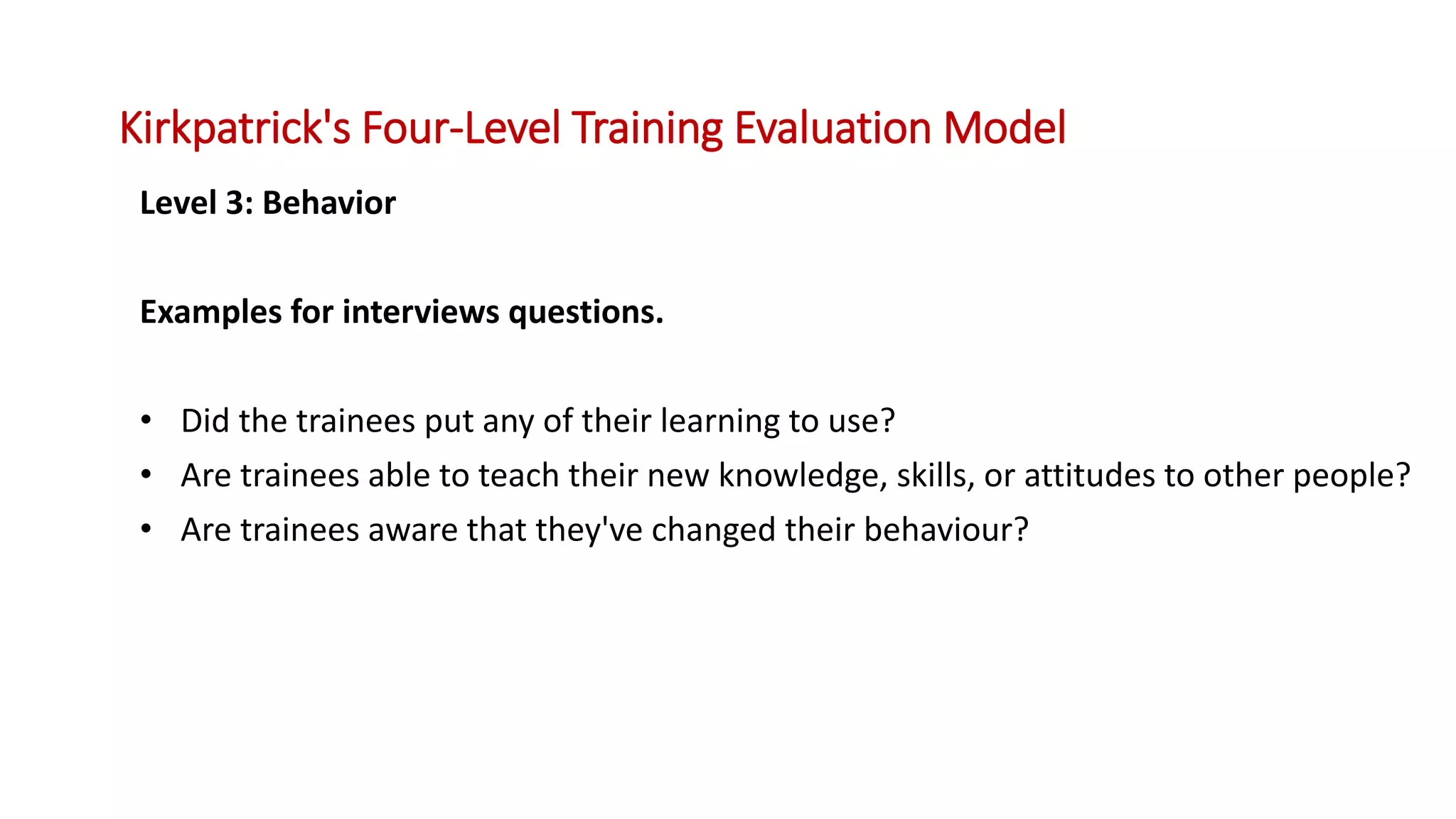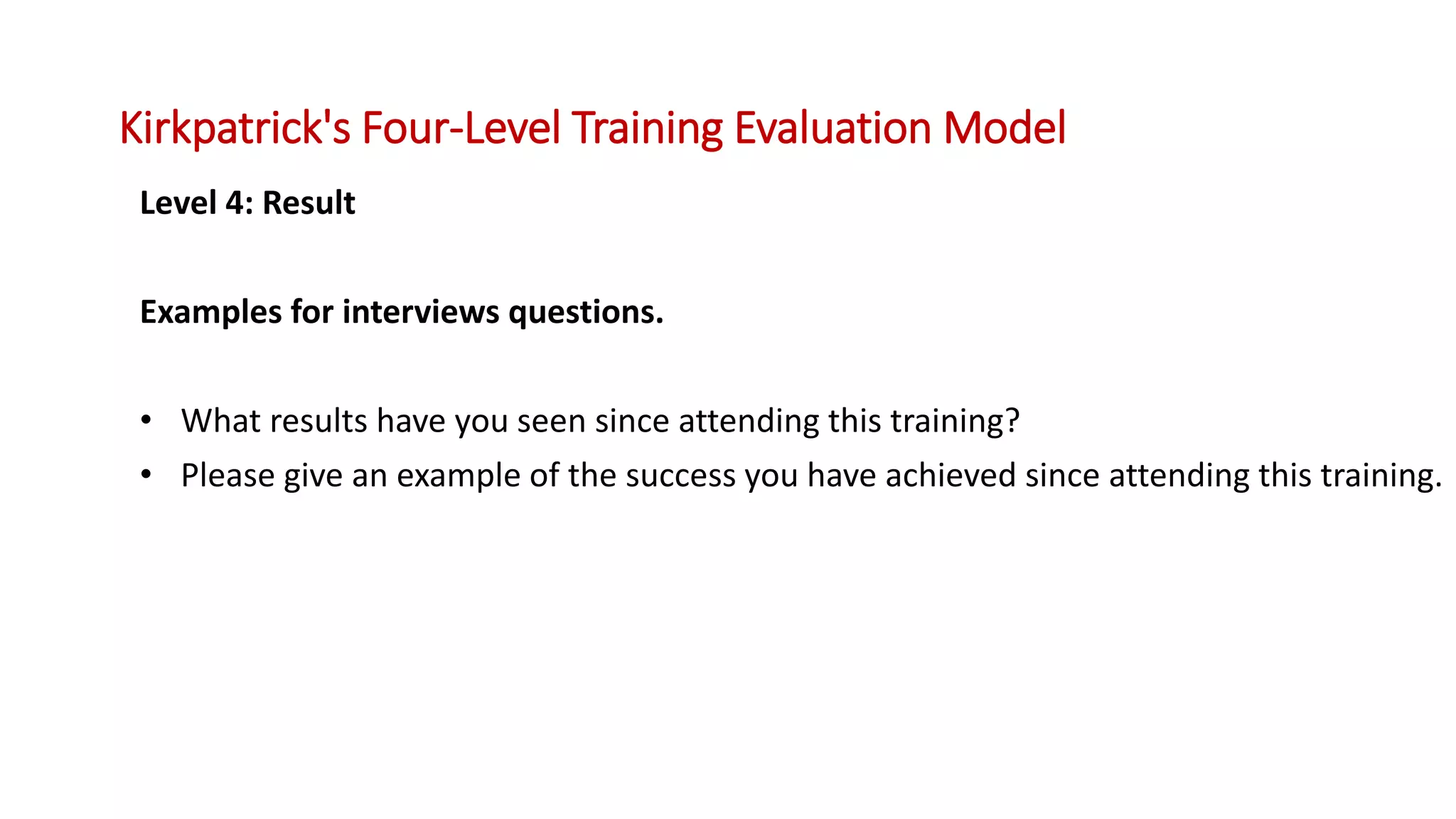The document outlines Kirkpatrick's four-level training evaluation model, emphasizing the importance of evaluating training effectiveness in capacity building. It details each level: reaction, learning, behavior, and results, providing specific measures and methods for assessment. Furthermore, it highlights lessons learned from Water Management Initiative experiences in evaluating the understanding of water scarcity issues in Jordan.
